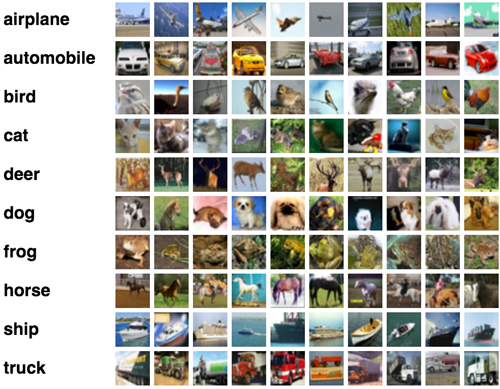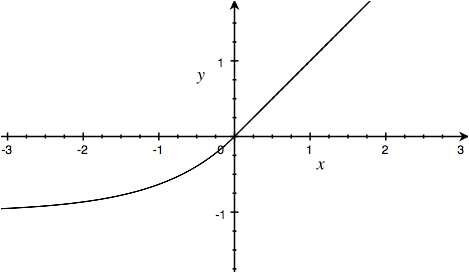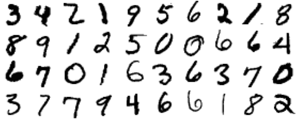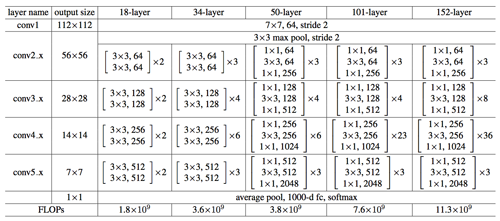Simple, opinionated explanations of various things encountered in Deep Learning / AI / ML.
Contributions welcome - there may be errors here!
Winner of ILSVRC 2012. Made a huge jump in accuracy using CNN. Uses Dropout, ReLUs, and a GPU.
Kind of the canonical deep convolution net.
http://papers.nips.cc/paper/4824-imagenet-classification-with-deep-convolutional-neural-networks
Not well defined. The idea of processing only part of the input at each time step. In visual attention, this is a low resolution window that jumps around the high resolution input image. Determining where to focus attention is controlled by a RNN.
Typical convolutional networks have input around 300 x 300 inputs, which is rather low resolution. Computation complexity grows at least linearly in the number of pixel inputs. Attention models seem like a promising method of handling larger inputs.
Recurrent Models of Visual Attention Attention applied to MNIST.
Multiple Object Recognition with Visual Attention Essentially v2 of the above model.
DRAW: A Recurrent Neural Network For Image Generation A generative attention model
Normalizing the inputs to each activation function can dramatically speed up learning.
60000 32x32 colour images in 10 classes, with 6000 images per class. There are 50000 training images and 10000 test images.
There's also a CIFAR-100 with 100 classes.
https://www.cs.toronto.edu/~kriz/cifar.html
This is the best intro: http://cs231n.github.io/convolutional-networks/
The atari playing model. This is the closest thing to a real "AI" out there. It learns end-to-end from its input and makes actions.
(Volodymyr Mnih Koray Kavukcuoglu David Silver Alex Graves Ioannis Antonoglou Daan Wierstra Martin Riedmiller)
A model that outputs a category based on its input. As opposed to generative model.
Image classification systems are discriminative.
Introduced in AlexNet? Randomly zero out 50% of inputs during the forward pass. Simple regularizer.
Another activiation function designed to avoid vanishing gradients.
elu(x) = x when x >= 0
exp(x) - 1 when x < 0
Clevert, Unterthiner, Hochreiter 2015
For generative networks (that is networks that produce high dimensional data like images or sound) typical loss functions cannot express the complexity of the data. Goodfellow et al proposed a scheme where you train two networks: the generator and the discriminator. The generator tries to fool the discriminator into think it's producing real data. The discriminator outputs a single probability deciding if it got input from the dataset or from the generator.
Generative Adversarial Networks (GAN) (2014)
Adversarial Autoencoders (2015)
A model that produces output like the dataset it is training on. As opposed to a discriminative model.
A model that creates images or sound would be a generative model.
(Kalchbrenner et al., 2015)
http://www.iam.unibe.ch/fki/databases/iam-handwriting-database
Famously used in Graves's handwriting generation RNN: http://www.cs.toronto.edu/~graves/handwriting.html
http://yann.lecun.com/exdb/mnist/
The most prominent computer vision contest, using the largest data set of images (ImageNet). The progress in the classification task has brought CNNs to dominate the field of computer vision.
| Year | Model | Top-5 Error | Layers | Paper |
|---|---|---|---|---|
| 2012 | AlexNet | 17.0 % | 8 | http://papers.nips.cc/paper/4824-imagenet-classification-with-deep-convolutional-neural-networks |
| 2013 | ZFNet | 17.0 % | 8 | http://arxiv.org/abs/1311.2901 |
| 2014 | VGG-19 | 8.43% | 19 | http://arxiv.org/abs/1409.1556 |
| 2014 | GoogLeNet / Inception | 7.89% | 22 | http://arxiv.org/abs/1409.4842 |
| 2015 | Inception v3 | 5.6% | http://arxiv.org/abs/1512.00567 | |
| 2015 | ResNet | 4.49% | 152 | http://arxiv.org/abs/1512.03385 |
Largest image dataset. Each image is tagged with a WordNet nouns. One of the key peices in the CNN progress along with GPUs and dedicated researchers.
Variation on ReLU that some have success with.
leaky_relu(x) = x when x >= 0
0.01 * x when x < 0
A type of RNN that solves the exploding/vanishing gradient problem.
http://colah.github.io/posts/2015-08-Understanding-LSTMs/
This paper is a great exploration of variations. Concludes that vanilla LSTM is best.
Originally invented by Hochreiter & Schmidhuber, 1997
Handwritten digits. 28x28 images. 60,000 training images and 10,000 testing images
Momentum is an often used improvement to SGD - follow past gradients with some weight.
Essentially v2 of NTM.
Kurach, Andrychowicz, Sutskever, 2015
(Graves et al., 2014)
http://arxiv.org/pdf/1502.01852v1
Rectified linear unit is a common activation function which was first proved useful in AlexNet. Recommend over sigmoid and tanh activiations.
relu(x) = max(x, 0)
A Microsoft Research model that won several categories of ILSVRC 2015. The key insight is that as networks get deeper they can get worse, by adding identify short cut connections over every two convolutional layers they are able to improve performance up to a 152 layer deep network. Here is a table from the paper that roughly shows the architectures they tried
Kaiming He, Xiangyu Zhang, Shaoqing Ren, Jian Sun, 2015
Object detection model.
Girshick et al., 2014
The backbone of Machine Learning.
(Garofolo et al., 1993)
Generative model. Compare to GAN.
Deep AutoRegressive Networks (October 2013)
Aaron Courville's slides (April 2015)
Karol Gregor on Variational Autoencoders and Image Generation (March 2015)
Close second place winner in ILSVRC 2014. Very simple CNN architecure using only 3x3 convolutions, max pooling, ReLUs, dropout



